Mastering the Pottery Wheel for Beginners
Welcome to the fascinating world of pottery! If you’ve ever watched a potter skillfully shaping clay on a spinning wheel and thought, “I want to do that!” then you’re in the right place. This article explores essential techniques, tips, and tools for beginners looking to master the pottery wheel, enhancing their skills and creativity in this rewarding craft. The pottery wheel is not just a tool; it’s a gateway to expressing your artistic vision, a means to create tangible pieces of art that can be both functional and beautiful. With the right guidance, anyone can learn to transform a lump of clay into a stunning work of art.
Before diving into the hands-on experience, it’s crucial to understand the pottery wheel itself. There are two main types of pottery wheels: the traditional kick wheel and the electric wheel. The kick wheel requires a bit of physical effort to get it spinning, while the electric wheel does the work for you, allowing you to focus more on shaping your clay. Each type has its charm and advantages, but for beginners, the electric wheel is often recommended due to its ease of use.
The basic components of a pottery wheel include the wheel head, which is the flat disc where you place your clay, and the foot pedal (for electric wheels) that controls the speed. Understanding how these components work together is essential for your pottery journey. As you familiarize yourself with the wheel, you’ll find that it’s not just about making pots; it’s about finding your rhythm and flow, much like dancing. So, let’s get ready to groove with the clay!
Now that you have a grasp of the pottery wheel, it’s time to gather your tools and materials. Pottery requires a few basic items to get started. Here’s a quick overview of what you’ll need:
- Clay: The foundation of your creations. There are various types, each with unique properties.
- Pottery Tools: Essential tools include rib tools for shaping, trimming tools for finishing, and sponges for smoothing.
- Accessories: Items like a needle tool for cutting and a wire cutter for removing your pieces from the wheel.
Having the right tools can make a significant difference in your pottery-making experience. Investing in quality tools will not only enhance your skills but also boost your confidence as you create.
When it comes to clay, you have options! Some popular types for beginners include earthenware, stoneware, and porcelain. Each type has its unique characteristics and uses:
| Type of Clay | Properties | Best Uses |
|---|---|---|
| Earthenware | Soft, easy to shape, low firing temperature | Functional and decorative pieces |
| Stoneware | Durable, medium firing temperature | Tableware and sculptures |
| Porcelain | Fine, smooth, high firing temperature | Delicate pieces and fine art |
Choosing the right clay can significantly impact your final piece. For beginners, earthenware is often the best starting point due to its forgiving nature.
Another important distinction to make is between air-dry and fired clay. Air-dry clay is convenient because it doesn’t require a kiln; just let it sit, and it hardens naturally. However, it’s less durable than fired clay, which is baked in a kiln at high temperatures, making it strong and waterproof. If you plan to create functional pottery that can hold liquids, fired clay is the way to go.
When sourcing your pottery tools, quality matters. Look for reputable suppliers or local pottery shops where you can physically check the tools. Online marketplaces can also be a great resource, but be sure to read reviews and check ratings. Investing in good tools will pay off in the long run, making your pottery experience more enjoyable and productive.
Now that you have your tools and materials, let’s dive into the fundamental techniques for using the pottery wheel. The three core skills every potter needs to master are centering, pulling, and shaping clay. Centering is the first step and arguably the most crucial. It involves getting the clay perfectly balanced on the wheel, which is essential for creating symmetrical pieces. Think of it as finding your balance in life—once you’re centered, everything else falls into place!
After centering, you’ll move on to pulling the clay up and shaping it into your desired form. This stage requires practice and patience, but with time, you’ll find your unique style and technique.
As with any craft, beginners often encounter pitfalls. Recognizing these common mistakes can help you improve your skills faster. One frequent issue is improper centering. If your clay isn’t centered correctly, it can lead to wobbly pieces that are difficult to work with. Another mistake is applying inconsistent pressure while shaping your pottery. This can result in uneven walls and shapes, so it’s crucial to maintain steady pressure throughout the process.
Once you’ve shaped your piece, it’s time to focus on finishing techniques. Trimming is essential for achieving balance and aesthetics in your pottery. It’s like giving your creation a haircut—removing excess clay to enhance its form. You’ll also want to explore glazing, which adds color and texture to your pieces. There are numerous glazing methods, each with its unique flair, allowing you to showcase your creativity.
Trimming is an art in itself. It allows you to refine the shape of your pottery and remove any imperfections. Use a trimming tool to carefully remove excess clay from the bottom and sides of your piece, ensuring it looks polished and professional.
Applying glazes can be a fun and rewarding process. Experiment with different glazing techniques, such as dipping, pouring, or brushing. Each method offers different results, so don’t hesitate to get creative and make your pottery truly unique.
Q: How long does it take to learn pottery?
A: The learning curve varies for everyone, but with consistent practice, you can start creating basic pieces within a few weeks.
Q: Do I need a kiln for pottery?
A: If you plan to work with fired clay, a kiln is necessary for hardening your pieces. However, air-dry clay does not require one.
Q: What’s the best clay for beginners?
A: Earthenware is often recommended for beginners due to its ease of use and forgiving nature.
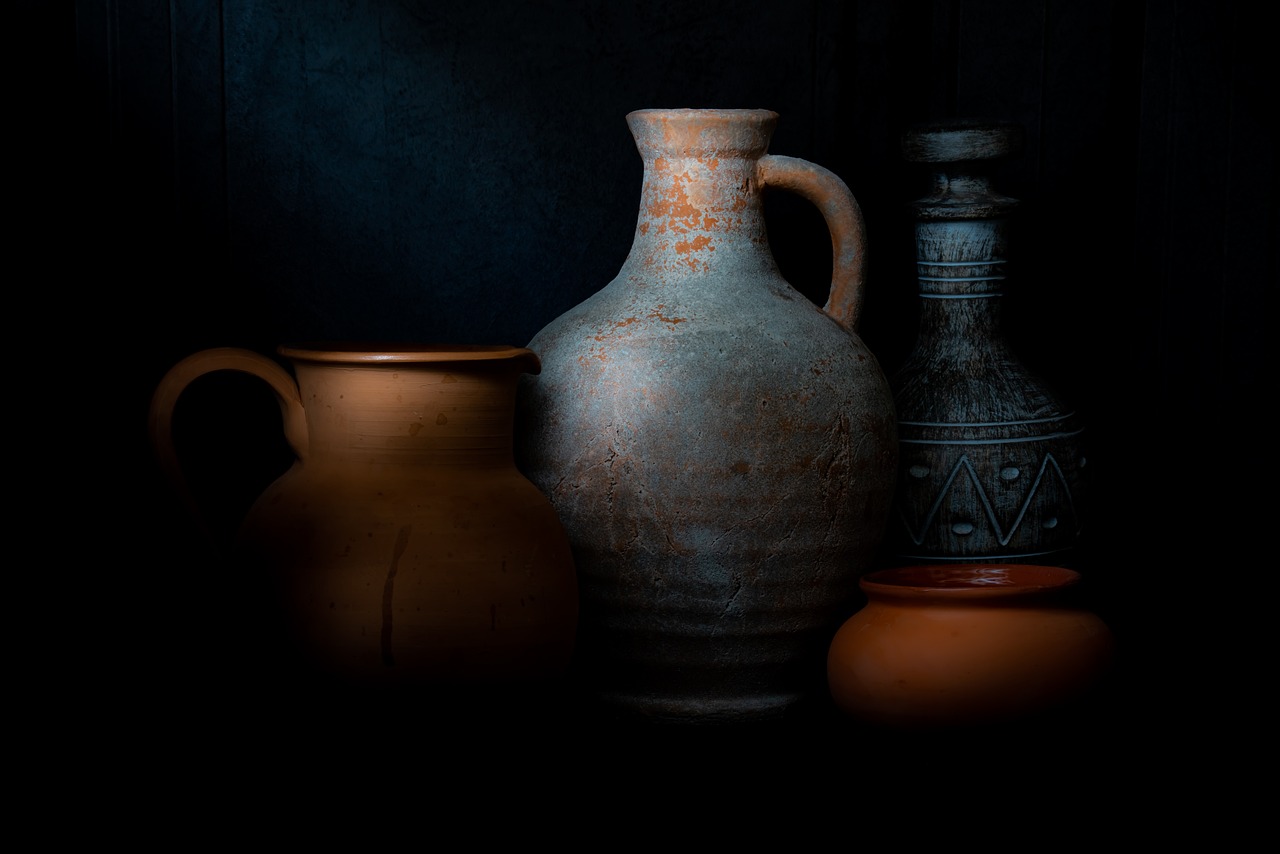
Understanding the Pottery Wheel
When you first step into the world of pottery, the pottery wheel can seem like a mystical device, spinning with endless possibilities. But fear not! Understanding the pottery wheel is your first step towards crafting beautiful pieces of art. At its core, a pottery wheel is a machine that spins clay, allowing you to shape it into various forms. There are two main types of pottery wheels: the kick wheel, which is powered by your foot, and the electric wheel, which uses a motor for a smoother operation. Each type has its unique charm and advantages, depending on your personal preference and style.
The basic components of a pottery wheel include the wheel head, which is the flat circular surface where you place your clay; the motor (in electric wheels), which provides the spinning motion; and the pedal, which controls the speed of the wheel. Understanding how these parts work together is essential for beginners. Imagine the wheel head as your stage, the clay as your performer, and the motor as the rhythm that keeps everything in sync. This synchronization is key to creating well-formed pottery.
Now, let’s dive deeper into how the wheel operates. When you start the wheel, it begins to spin, and you place a lump of clay in the center of the wheel head. This is where the magic happens! You’ll need to use your hands to mold and shape the clay as it spins. The goal is to keep the clay centered on the wheel, which can be quite the challenge at first. Think of it like balancing a top; if it wobbles, it won’t spin smoothly, and your pottery will reflect that inconsistency.
For beginners, mastering the pottery wheel also means getting comfortable with the concept of centering. Centering is crucial because if your clay isn’t centered, it can lead to uneven shapes and frustrating results. It’s like trying to build a house on a rocky foundation; it just won’t hold up! As you practice, you’ll develop a feel for the clay and learn how to apply the right amount of pressure with your hands to achieve that perfect center.
In addition to centering, you’ll want to familiarize yourself with the different speeds of the wheel. Slower speeds are great for beginners who are still learning to manipulate the clay, while faster speeds can be used once you gain confidence and control. The key is to find a rhythm that works for you. Just like dancing, pottery is about finding your groove!
Understanding the pottery wheel is not just about the mechanics; it’s also about the connection you build with your materials. Each piece of clay has its personality, and as you learn to listen to it, your creativity will flourish. The more you practice, the more you’ll discover the joy of transforming a simple lump of clay into a work of art. So, roll up your sleeves, get your hands dirty, and let the journey begin!
1. What is the difference between a kick wheel and an electric wheel?
The kick wheel is operated by foot power, which gives you a unique control over the speed and rhythm of the wheel. In contrast, an electric wheel uses a motor, allowing for a consistent spin without the physical effort, making it easier for beginners.
2. How do I know if my clay is centered?
You’ll know your clay is centered when it spins smoothly without wobbling. It should look symmetrical as it spins, and your hands should feel even pressure all around the clay.
3. Can I use any type of clay on the pottery wheel?
Not all clays are suitable for wheel throwing. Look for clay labeled as “wheel-throwing clay” or “stoneware clay,” which is designed to hold its shape when spun.
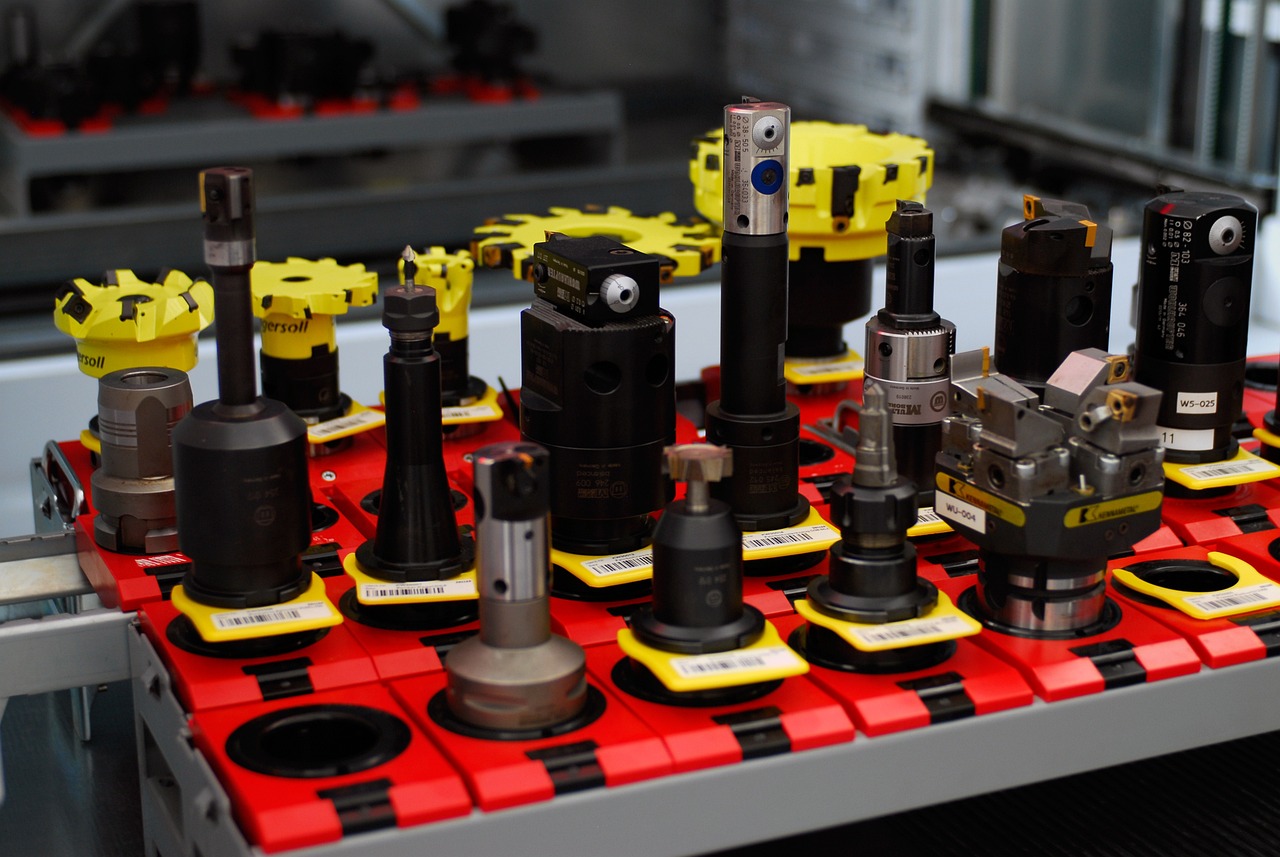
Essential Tools and Materials
When diving into the world of pottery, having the right tools and materials can make all the difference. Imagine trying to bake a cake without the proper ingredients or tools; the same principle applies here. To truly unleash your creativity and skill on the pottery wheel, you need to equip yourself with a solid arsenal of essentials. Let's explore the key components that will help you on your artistic journey.
First and foremost, you'll need clay. This is the heart and soul of your pottery projects. There are various types of clay available, each with unique properties. For beginners, it's best to start with earthenware or stoneware. Earthenware is quite forgiving and easy to work with, making it ideal for beginners. Stoneware, on the other hand, is a bit more durable and can withstand higher temperatures, giving you more versatility in your projects. Understanding the characteristics of these clays will significantly influence your work.
Next up are the tools. You might think you only need the wheel and some clay, but a few additional tools can elevate your pottery game. Essential tools include:
- Wire Cutter: Perfect for slicing your clay from the block or cutting your finished pieces off the wheel.
- Pottery Ribs: These come in various shapes and materials and are crucial for shaping and smoothing your clay.
- Sponge: A must-have for keeping your hands and the clay moist, which is essential during the shaping process.
- Wooden Modeling Tools: Great for detailing and refining your pieces.
In addition to tools, you'll also want to consider some accessories that can enhance your pottery experience. A sturdy work surface is vital; it should be flat and able to withstand the occasional mess! A pottery wheel bat can be a game-changer, allowing you to easily lift your pieces off the wheel without disturbing their shape. Lastly, don’t forget about glazes and underglazes for finishing touches. These can add color and texture to your pieces, transforming them from simple clay forms into stunning works of art.
Now, let’s talk about the importance of quality. Investing in good quality tools and materials will save you time and frustration in the long run. Cheap tools can break easily and may not perform as well, which can lead to a less enjoyable pottery experience. So, when sourcing your tools, consider visiting local pottery supply stores or reputable online retailers. Look for reviews and ask fellow potters for recommendations to ensure you’re getting the best bang for your buck.
In conclusion, equipping yourself with the right tools and materials is crucial for your success in pottery. By understanding the different types of clay, gathering essential tools, and investing in quality accessories, you’re setting yourself up for a fulfilling and enjoyable pottery journey. Remember, every great potter started as a beginner, so don’t be afraid to experiment and find what works best for you!
Q: What type of clay should I start with as a beginner?
A: Earthenware is a great choice for beginners due to its ease of use and forgiving nature.
Q: Do I need a lot of tools to start pottery?
A: While you can start with just a few basic tools, having additional tools can enhance your experience and results.
Q: Where can I find quality pottery supplies?
A: Local pottery supply stores and reputable online retailers are great places to find quality tools and materials.

Choosing the Right Clay
When embarking on your pottery journey, one of the first and most crucial decisions you'll make is . The type of clay you select can significantly impact not only the ease of your pottery-making process but also the final appearance and durability of your creations. With a plethora of options available, how do you know which one to pick? Let’s break it down.
First off, it’s essential to understand the properties of different clay types. Generally, there are three main categories of clay you might encounter:
- Earthenware: This is the most common type of clay for beginners. It’s easy to work with and fires at low temperatures, making it perfect for creating functional pottery like mugs and bowls. However, it is porous and not as durable as other types, so it generally requires glazing for waterproofing.
- Stoneware: If you’re looking for something a bit more robust, stoneware might be your best bet. It fires at higher temperatures, resulting in a non-porous and durable finish. This makes it ideal for both functional and decorative pieces.
- Porcelain: Often considered the “fancy” clay, porcelain is known for its fine texture and translucence. While it can produce stunning results, it’s also more challenging to work with, making it less suitable for complete beginners.
Now that you have a basic understanding of clay types, let’s talk about how to select the best clay for your specific projects. Consider the following factors:
- Project Purpose: Are you making decorative items or functional ware? If you're crafting dinnerware, stoneware or earthenware with a good glaze might be the way to go.
- Firing Method: Will you have access to a kiln? If not, air-dry clay could be a suitable alternative, although it lacks the durability of fired clay.
- Personal Preference: Sometimes, it simply comes down to what feels right for you. Experimenting with different types can lead to surprising discoveries!
It's also worth noting that different clays have varying shrinkage rates when fired. For instance, stoneware typically shrinks less than earthenware, which means you might need to adjust your designs accordingly. This is especially important if you are planning to combine different clay types in a single project.
In conclusion, the journey of selecting the right clay is not just about functionality; it’s about finding a medium that resonates with your artistic vision. Don’t be afraid to experiment! Each type of clay offers unique characteristics that can enhance your creativity and skill. As you dive deeper into the world of pottery, you’ll find that the right clay can inspire you to create pieces that truly reflect your personal style.
1. Can I mix different types of clay?
Mixing clays can be tricky due to differing shrinkage rates and firing temperatures. It's best to stick to one type for consistency.
2. What is the best clay for beginners?
Earthenware is often recommended for beginners due to its ease of use and low firing temperature.
3. How do I know if my clay is dry enough to fire?
Clay should feel cool to the touch and not be damp or cool in the center. A simple test is to press your finger into the clay; if it holds the impression without collapsing, it’s ready!
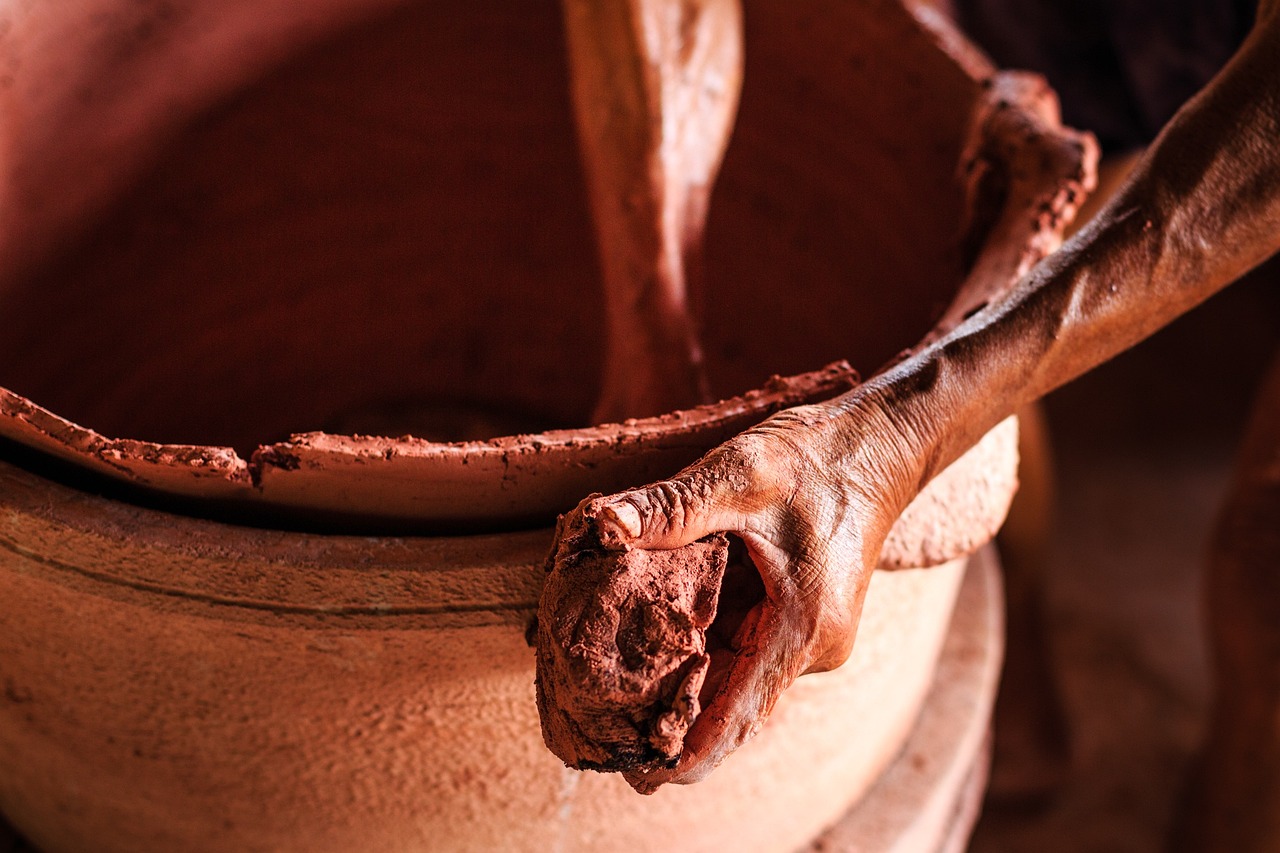
Air-Dry vs. Fired Clay
When embarking on your pottery journey, one of the first decisions you'll face is whether to use air-dry clay or fired clay. Each type of clay has its unique characteristics, advantages, and challenges, which can significantly influence your creative process and the final outcome of your pottery projects. Understanding the differences between these two options is crucial for making an informed choice that aligns with your artistic goals.
Air-dry clay is a fantastic option for beginners who want to dive into pottery without the need for a kiln. This type of clay is designed to harden when exposed to air, making it incredibly convenient. You can simply mold your piece, let it dry, and voilà! Your creation is ready to be painted or decorated. However, it’s important to note that air-dry clay is generally not waterproof or as durable as fired clay. This means that if your piece is intended for outdoor use or needs to withstand moisture, air-dry clay might not be the best choice.
On the other hand, fired clay offers a level of durability and versatility that air-dry clay simply cannot match. Once shaped and dried, fired clay is subjected to high temperatures in a kiln, transforming it into a strong, permanent material. This process not only enhances the clay's durability but also allows for a wider range of glazing techniques, resulting in stunning finishes that can be both functional and artistic. Fired clay is ideal for creating pottery that will be used for food or drink, as it can be made food-safe through proper glazing and firing.
| Feature | Air-Dry Clay | Fired Clay |
|---|---|---|
| Drying Method | Air-drying | Fired in a kiln |
| Durability | Less durable, not waterproof | Very durable, waterproof when glazed |
| Use Cases | Crafts, decorative items | Functional pottery, dishware |
| Skill Level | Beginner-friendly | Requires more skill and equipment |
In summary, the choice between air-dry and fired clay ultimately depends on what you plan to create and how you intend to use your pottery. If you're just starting and want a hassle-free experience, air-dry clay is a great way to get your hands dirty and unleash your creativity. However, if you're looking to produce more durable and functional pieces, investing in fired clay and the necessary equipment, like a kiln, may be the way to go. Each type of clay opens up a world of possibilities, so choose the one that resonates with your artistic vision!
- Can I paint air-dry clay? Yes! Once it's dry, you can paint it with acrylic paints or markers for decoration.
- Is fired clay safe for food? Yes, as long as it is properly glazed and fired to the correct temperatures.
- How long does it take for air-dry clay to dry? Typically, it takes 24-72 hours to fully dry, depending on the thickness of your piece and environmental conditions.
- Do I need a kiln for fired clay? Yes, a kiln is necessary to fire clay at high temperatures, transforming it into a durable material.
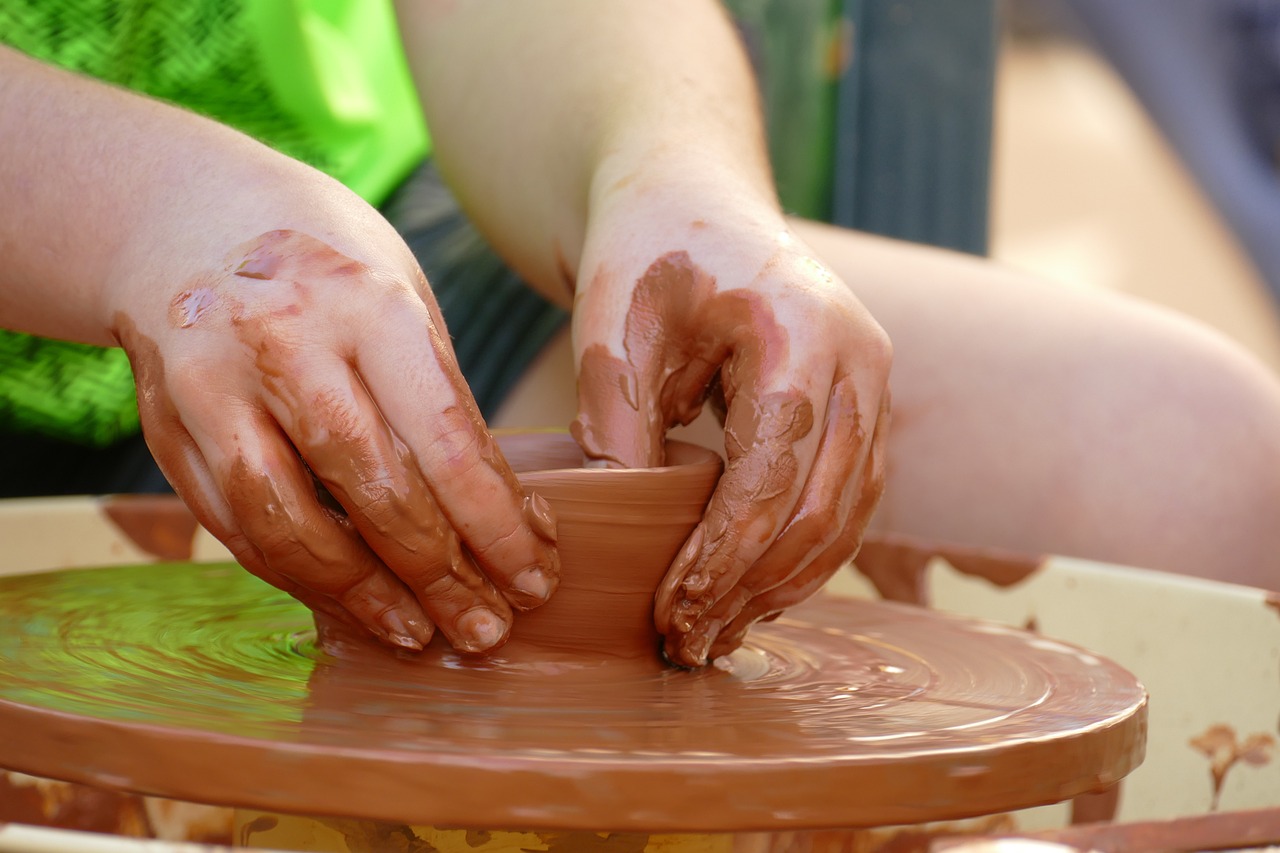
Finding Quality Tools
When it comes to pottery, having the right tools can make all the difference between a masterpiece and a mess. As a beginner, you might feel overwhelmed by the sheer number of tools available, but fear not! The journey of finding quality pottery tools can be both exciting and rewarding. First and foremost, you want to invest in durable and reliable tools that will stand the test of time. Think of your tools as the paintbrushes of a painter; without them, your creativity might not fully flourish.
Start by visiting local pottery supply stores or art supply shops. There’s something magical about feeling the weight of a tool in your hands and getting a sense of its quality. Look for tools made from stainless steel or high-quality wood, as these materials tend to last longer and perform better. If you’re unsure where to begin, here’s a quick rundown of essential tools that every beginner should consider:
- Pottery Wheel: The heart of your pottery-making journey, choose a wheel that suits your space and budget.
- Clay Cutters: Perfect for slicing and shaping your clay without damaging it.
- Wooden Modeling Tools: These are great for refining shapes and adding details to your pieces.
- Sponges: Useful for smoothing surfaces and adding moisture to your clay.
Additionally, consider the ergonomics of the tools. You’ll be spending a lot of time working with them, so they should feel comfortable in your hands. A well-designed tool will not only enhance your performance but also reduce the risk of strain or injury. If you can, try out different brands and models to see what feels best for you.
Online shopping can also be a great option, especially for those who may not have local stores nearby. Websites dedicated to pottery supplies often have customer reviews that can guide you towards quality products. Just remember to check the return policy in case you find that a tool doesn’t meet your expectations. Here’s a quick comparison table of some popular pottery tools and their features:
| Tool | Material | Use |
|---|---|---|
| Pottery Wheel | Stainless Steel | Throwing |
| Wire Cutter | Plastic/Metal | Cutting Clay |
| Trimming Tool | Wood/Metal | Finishing |
| Glazing Brush | Nylon | Applying Glaze |
Ultimately, finding quality tools is about understanding your own needs and preferences. Don’t rush the process; take your time to explore and experiment. As you hone your skills, you’ll develop a better sense of what tools work best for you, making your pottery journey all the more enjoyable.
Q: What is the most essential tool for a beginner potter?
A: The most essential tool is undoubtedly the pottery wheel, as it is where the magic happens. However, having a set of basic shaping and cutting tools will greatly enhance your experience.
Q: Where can I find affordable pottery tools?
A: Check local craft stores, online marketplaces, and pottery supply websites. Often, you can find good deals on starter kits that include several essential tools.
Q: Do I need to spend a lot of money on tools as a beginner?
A: Not necessarily. While quality tools are important, there are many affordable options that can serve you well as you start learning the craft.
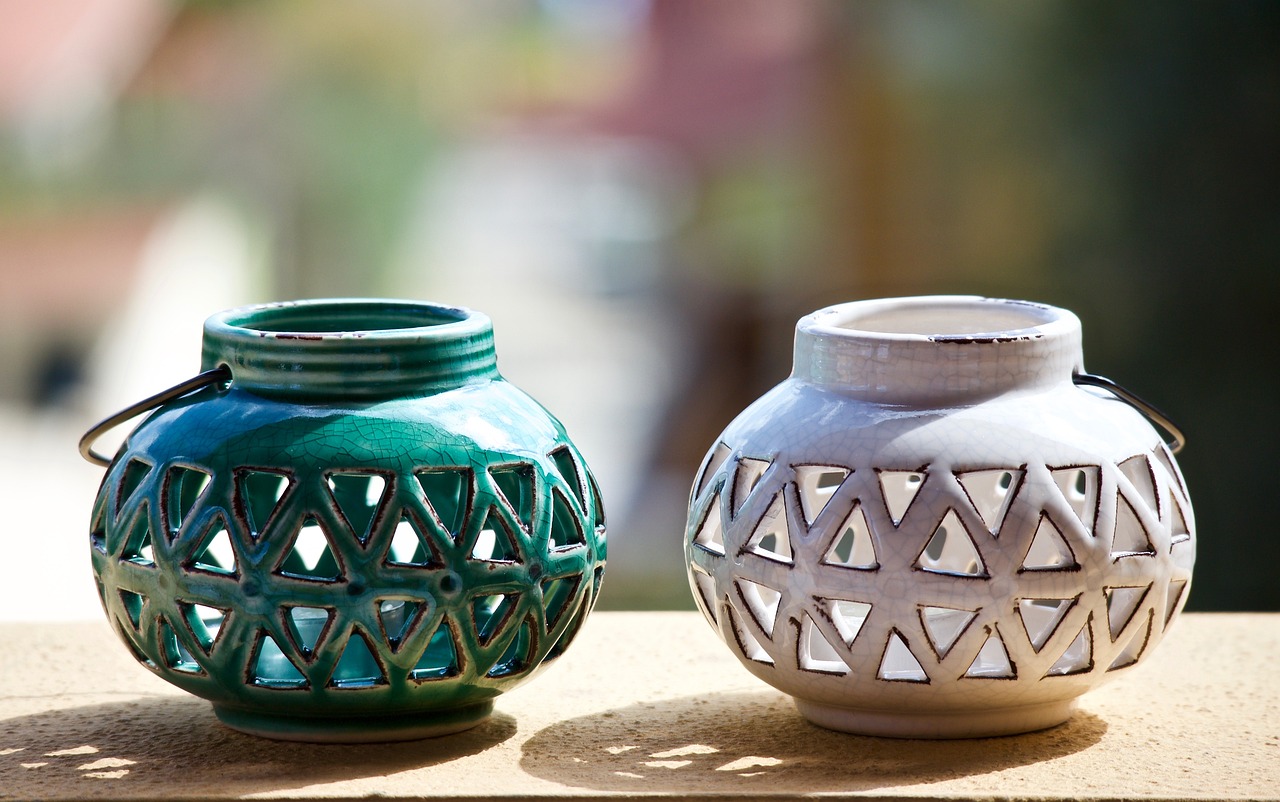
Basic Wheel Techniques
When you're just starting out on the pottery wheel, it can feel a bit like trying to ride a bike for the first time—exciting yet daunting! The good news is that mastering the basic wheel techniques is your ticket to creating stunning pottery pieces that reflect your unique style and creativity. Let's dive into some of the fundamental techniques that every beginner should know.
The first and foremost technique is centering. Imagine trying to spin a top that isn’t balanced; it wobbles and eventually falls over. The same principle applies to your clay on the wheel. Centering is crucial because if your clay isn’t perfectly balanced, you’ll struggle to shape it. To center your clay, start by throwing a lump of it onto the wheel head. With wet hands, apply pressure while the wheel spins to push the clay into a symmetrical mound. It may take a few tries, but once you get the hang of it, you’ll feel like a wizard commanding the clay!
Next up is the technique of pulling. Once your clay is centered, it’s time to transform that lump into a vessel. Pulling involves using your fingers to gradually lift the walls of the clay while applying even pressure. This is where the magic happens! As you pull, think of it like pulling taffy—slow and steady is key. Remember to keep your hands wet to prevent the clay from sticking and to maintain a smooth surface. It’s all about finding that sweet spot of pressure; too much can lead to a collapse, while too little will leave you with a thick, clunky piece.
Shaping is the final basic technique you’ll want to master. This is where your creativity can really shine! Whether you’re aiming for a bowl, cup, or vase, the shaping technique will vary slightly depending on your desired outcome. Use your hands and various tools to refine the shape, ensuring that it’s not only aesthetically pleasing but also functional. Don’t be afraid to experiment! Sometimes the best designs come from happy accidents.
To help you visualize these techniques, here’s a quick overview of the basic wheel techniques:
| Technique | Description |
|---|---|
| Centering | Balancing the clay on the wheel to ensure even shaping. |
| Pulling | Lifting the walls of the clay to create height and form. |
| Shaping | Refining the form of the pottery piece using hands and tools. |
As you practice these techniques, don’t forget that pottery is as much about patience as it is about skill. Each time you sit at the wheel, you’re not just working with clay; you’re also developing your artistic voice. So, embrace the process, and remember that with every spin of the wheel, you’re one step closer to becoming a pottery pro!
- How long does it take to learn pottery wheel techniques? Learning to master the pottery wheel can vary for everyone, but with consistent practice, you can start creating recognizable pieces within a few weeks.
- What type of clay is best for beginners? Stoneware clay is often recommended for beginners due to its versatility and ease of use.
- Can I use a regular kitchen knife for trimming? While it’s possible, investing in specialized pottery trimming tools will yield better results and help you achieve cleaner lines.

Common Mistakes to Avoid
When you're just starting out with the pottery wheel, it's easy to get caught up in the excitement and forget some of the fundamental aspects of this craft. Many beginners face challenges that can be easily avoided with a little awareness and practice. Understanding these common pitfalls can save you time, frustration, and clay! Let’s dive into some of the most frequent mistakes that can hinder your pottery journey.
One of the biggest hurdles for newcomers is improper centering. Centering the clay on the wheel is crucial, as it sets the stage for all subsequent shaping. If your clay isn’t centered, you’ll find it nearly impossible to create a symmetrical piece. Imagine trying to build a tower on a wobbly foundation; it’s bound to topple over! To avoid this mistake, take your time during the centering process. A good tip is to gently press down on the clay while it spins, applying even pressure until you feel it stabilize. Remember, patience is key!
Another common issue is applying inconsistent pressure while working with the clay. When you're pulling and shaping, varying your pressure can lead to uneven walls and an unstable form. It's like trying to draw a straight line while your hand is shaking; the result is rarely what you envisioned. To combat this, focus on maintaining a steady hand and consistent pressure throughout your work. This will not only improve the quality of your pottery but will also boost your confidence as you see your skills improve.
Additionally, many beginners neglect proper cleanup and maintenance of their tools and workspace. After a long session at the wheel, it might be tempting to just walk away, but taking a few minutes to clean your tools and surfaces can make a significant difference in your next session. Not only does it help maintain your equipment, but it also creates a more inviting and organized environment for your next creative endeavor. Trust me, a clean workspace can be just as inspiring as a blank canvas!
Lastly, don’t underestimate the importance of understanding your clay and its drying times. Many beginners rush into the glazing process without realizing that their pieces may not be fully dry, leading to cracks or other issues during firing. Always check the moisture level of your clay before proceeding to the next steps. As a rule of thumb, if it feels cold to the touch, it’s likely not ready yet. Being patient and allowing your work to dry properly will pay off in the long run.
By being mindful of these common mistakes—improper centering, inconsistent pressure, neglecting cleanup, and misunderstanding drying times—you can significantly enhance your pottery experience. Remember, every potter has been a beginner at some point, and learning from these challenges is part of the journey. Embrace the process, keep practicing, and watch your skills blossom!
Q: What is the most important skill to master as a beginner potter?
A: Centering your clay on the wheel is the most crucial skill for beginners. It sets the foundation for all your shaping and forms.
Q: How can I improve my technique on the pottery wheel?
A: Practice is key! Focus on maintaining consistent pressure and take your time with each step. Watching tutorials or taking a class can also provide valuable insights.
Q: What should I do if my clay keeps cracking?
A: Ensure that your clay is properly wedged and that you are not working with it while it is too dry. Also, avoid applying too much pressure during shaping.
Q: How do I know when my pottery is dry enough to glaze?
A: A good indicator is to touch your piece; if it feels cool, it may still be wet. Allow it to air dry until it reaches room temperature before glazing.
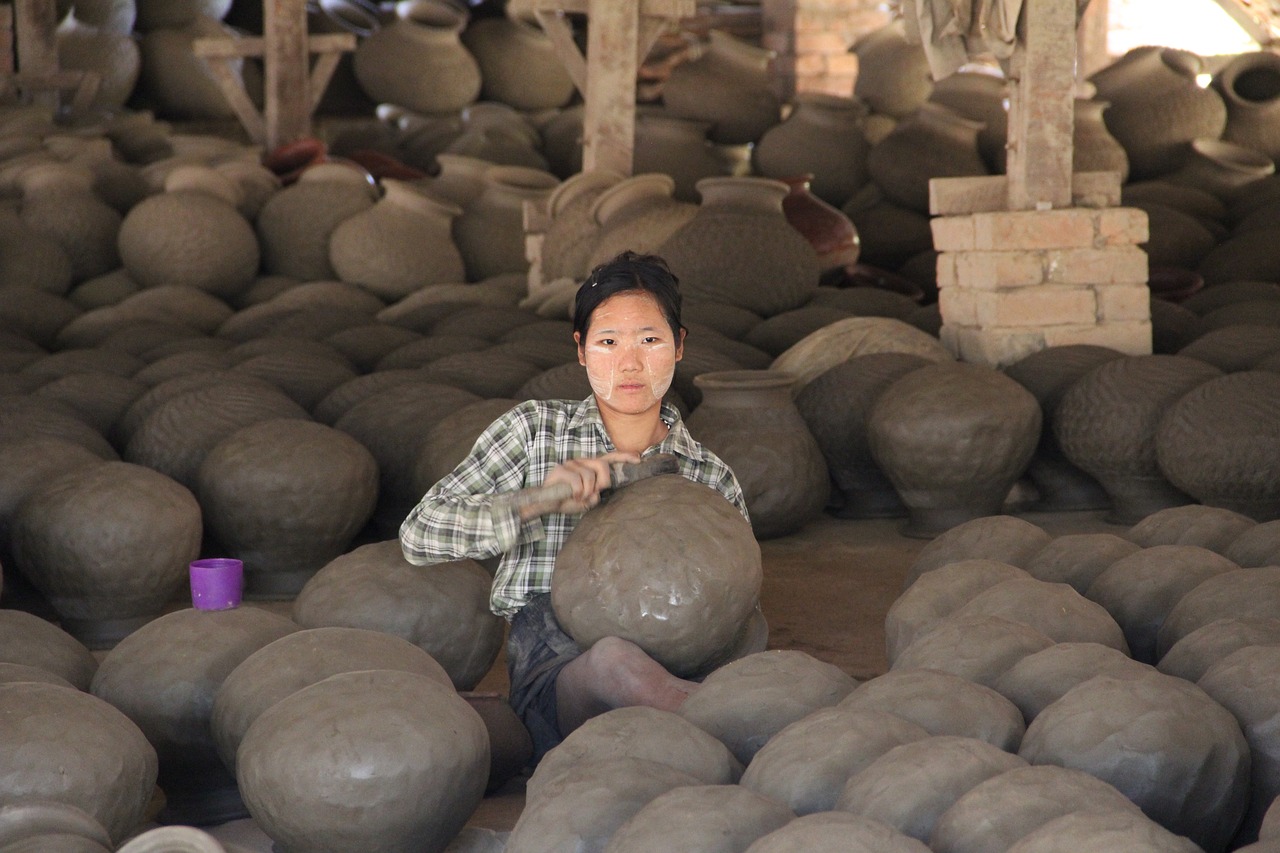
Improper Centering
Centering is often considered the foundation of successful pottery making, and for good reason. When you sit down at the pottery wheel, it’s like preparing for a dance; if you don’t start with the right rhythm, the entire performance can fall apart. Improper centering can lead to a variety of issues, from uneven walls to complete collapse of your piece. Imagine trying to build a tower on a shaky base—it’s bound to topple over!
When you're new to the pottery wheel, you might feel that centering the clay is a simple task, but it requires practice and finesse. The clay needs to be perfectly aligned with the wheel’s axis to ensure that it spins uniformly. If it’s off-center, you’re destined for a bumpy ride! The first step is to throw the clay onto the wheel head with enough force to create a solid bond. Once it’s in place, you’ll want to apply pressure with your hands to coax the clay into a centered position.
Here are some common indicators that your clay is improperly centered:
- Uneven Thickness: If you notice that one side of your pot is thicker than the other, it’s a sign that the clay wasn’t centered correctly.
- Wobbling: A wobbly piece as it spins is a clear indication that the clay is off-center.
- Difficulty Shaping: If you find it challenging to pull the clay up into walls, it may be due to improper centering.
So, how do you improve your centering skills? First, practice makes perfect! Spend time just focusing on centering before you move on to shaping. Use your hands to apply even pressure, and don’t be afraid to slow down. It’s also helpful to watch experienced potters and learn from their techniques. Remember, every great potter started as a beginner, and the road to mastery is paved with practice and patience.
To sum up, improper centering can be a major obstacle in your pottery journey, but with dedication and the right techniques, you’ll be able to overcome it. Think of centering as the heartbeat of your pottery making; without it, your creations may lack the beauty and stability they deserve. So, take a deep breath, focus, and let your hands guide the clay into its rightful place!
Q: How can I tell if my clay is centered?
A: You can tell if your clay is centered by observing its uniformity as it spins. If you see uneven thickness or wobbles, it’s likely off-center.
Q: What should I do if my clay keeps moving off-center?
A: Ensure that you’re applying consistent pressure with both hands and that the clay is firmly attached to the wheel head. You may need to start over if it continues to move.
Q: How long does it take to master centering?
A: Mastering centering varies from person to person. With regular practice, many beginners see improvement within a few weeks, but some may take longer.

Inconsistent Pressure
When working on the pottery wheel, one of the most crucial aspects to master is the application of consistent pressure. Imagine trying to mold a soft ball of dough; if you push too hard in one spot while neglecting another, you end up with an uneven shape. The same principle applies to pottery. Inconsistent pressure can lead to a variety of issues, from wobbly forms to uneven thickness, which can jeopardize the integrity of your piece.
As you begin your pottery journey, it’s essential to develop a feel for how much pressure to apply and where. This is not just about strength; it’s about finesse. You want to gently coax the clay into the desired shape without overworking it. Think of your hands as the guiding force, much like a conductor leading an orchestra. Each movement must be deliberate and harmonious to achieve a beautiful final product.
Here are some tips to help you maintain consistent pressure:
- Focus on your grip: Your fingers should be firm but not tense. A relaxed grip allows for better control and sensitivity to the clay's response.
- Use your body: Instead of relying solely on your arms, engage your entire body. Shift your weight and use your core to provide stability and strength.
- Practice makes perfect: Spend time practicing basic shapes. The more familiar you become with the clay and wheel, the better you’ll be at applying the right amount of pressure.
Additionally, it can be helpful to observe experienced potters. Watch how they interact with the clay, noting the subtle movements of their hands and the pressure they apply at various stages. You might even consider recording your sessions to review your technique and identify areas for improvement.
Remember, pottery is as much about the journey as it is about the final piece. Embrace the learning process, and don’t get discouraged by early mistakes. Each piece you create is a step closer to mastering the art of pottery, and by focusing on consistent pressure, you will significantly enhance the quality of your work.
- What should I do if my pottery piece collapses? Don't panic! This often happens when clay is too wet or if there's inconsistent pressure. Try to assess what went wrong, and practice re-centering.
- How can I tell if I'm applying too much pressure? If you notice the clay is deforming or your hands are struggling to maintain control, you might be applying too much pressure. Aim for a gentle touch.
- Can I fix a piece that has uneven thickness? Yes, you can trim it after it dries a bit. However, it's best to aim for even thickness during the wheel process to avoid complications later.

Finishing Techniques
When it comes to pottery, the finishing techniques you choose can dramatically transform your creations from simple clay objects into stunning works of art. The finishing stage is where your personality and creativity really shine through, allowing you to put your unique stamp on each piece. Whether you're a beginner or have some experience under your belt, mastering these techniques will elevate your pottery to a whole new level. So, let's dive into some essential finishing techniques that will help you polish your pottery and make it truly stand out!
One of the most critical finishing techniques is trimming. After you’ve thrown your piece on the wheel, it’s essential to trim it to achieve balance and aesthetics. Trimming helps remove excess clay from the bottom of your pottery, which not only improves the overall look but also ensures that your piece sits evenly. When trimming, use a trimming tool to carefully carve away the clay while your piece is still damp but not too wet. This technique requires a steady hand and a keen eye, but with practice, you’ll find the perfect balance between form and function.
Next up is glazing. Applying glaze is like giving your pottery a beautiful outfit; it enhances the visual appeal and adds a protective layer. There are various glazing methods you can explore, such as dipping, brushing, or spraying. Each technique offers a different effect and can completely change the look of your pottery. For beginners, dipping is often the easiest method, as it ensures an even coat. However, brushing gives you more control over design and can create stunning patterns. When glazing, remember to keep the glaze away from the bottom of your piece to avoid sticking during firing.
Finally, let's talk about firing. This is the stage where your artistic vision truly comes to life. Firing your pottery solidifies the clay and sets the glaze, ensuring durability. There are two main types of firing: bisque firing and glaze firing. Bisque firing is the initial firing that transforms your clay into ceramic, while glaze firing is the second firing that melts the glaze and gives your piece its final finish. Understanding the firing process is crucial, as it affects the color and texture of your pottery. Always follow the recommended temperature settings for your specific clay and glaze to achieve the best results.
In summary, mastering finishing techniques like trimming, glazing, and firing will greatly enhance your pottery-making skills. These steps not only add beauty but also ensure that your creations are functional and long-lasting. Remember, practice makes perfect, so don’t be afraid to experiment with different techniques and materials. Your pottery journey is just beginning, and each piece you create is a step towards mastering this rewarding craft.
- What is the best way to trim pottery? Trimming is best done when your piece is leather-hard. Use a trimming tool to carefully carve away excess clay while ensuring an even base.
- How do I choose the right glaze? The right glaze depends on the effect you want to achieve. Test different glazes on small pieces to see how they react during firing.
- Can I fire my pottery at home? If you have a kiln, yes! Just be sure to follow the manufacturer's guidelines for firing temperatures and schedules.

Trimming Your Pieces
Trimming your pottery pieces is one of those magical moments where your creation transforms from a simple lump of clay into a refined work of art. It’s akin to giving your sculpture a haircut; it’s all about finding that perfect balance and aesthetic appeal. But why is trimming so essential? Well, it serves multiple purposes. First, it not only enhances the visual appeal of your pottery but also ensures that your pieces are functional and balanced. Imagine trying to drink from a mug that wobbles! That’s where trimming comes in, allowing you to correct any imbalances and refine the shape.
When you trim, you’re essentially removing excess clay from the bottom of your piece. This helps to create a foot, which is the part that rests on the surface. A well-trimmed foot not only adds stability but also gives your pottery a professional finish. So, how do you go about this? Start by letting your piece dry to a leather-hard state—this is the sweet spot where the clay is firm enough to hold its shape but still soft enough to be worked on. If you try to trim too early, your piece may lose its shape, and if you wait too long, it might be too hard to work with.
Here’s a quick rundown of the trimming process:
- Tools: You’ll need a trimming tool, a wooden rib, and a bat (a flat disk that holds your piece). Make sure your tools are clean and ready to go!
- Positioning: Secure your piece onto the wheel using a bat. Ensure it’s centered to avoid any mishaps while trimming.
- Trimming Technique: Start by gently applying pressure with your trimming tool. Move slowly and steadily, allowing the tool to glide over the surface. Remember, it’s all about finesse!
As you trim, keep an eye on the thickness of your piece. Ideally, the walls should be consistent, about 1/4 inch thick, to ensure durability. If you make the walls too thin, they might crack during firing, which is definitely not what you want! Additionally, don't forget to check for any sharp edges—smooth them out with your wooden rib to create a pleasant tactile experience.
Finally, once you’re satisfied with the trimming, it’s time to clean up. Remove any excess clay shavings from the wheel and your piece. This not only makes for a tidy workspace but also helps in preparing your pottery for glazing and firing. Remember, trimming is an art that improves with practice, so don’t get discouraged if your first few attempts aren’t perfect. Each piece you trim is a step closer to mastering the craft!
Q: How long should I wait before trimming my pottery?
A: It's best to wait until your piece is leather-hard. This stage allows you to work on the clay without it losing its shape.
Q: Can I trim my pottery too much?
A: Yes, trimming too much can weaken the structure of your piece. Aim for a consistent thickness of about 1/4 inch.
Q: What tools do I need for trimming?
A: Essential tools include a trimming tool, a wooden rib, and a bat to secure your piece on the wheel.
Q: Is trimming necessary for all pottery pieces?
A: While not every piece requires trimming, it is highly recommended for functional items like bowls and mugs to ensure balance and aesthetics.
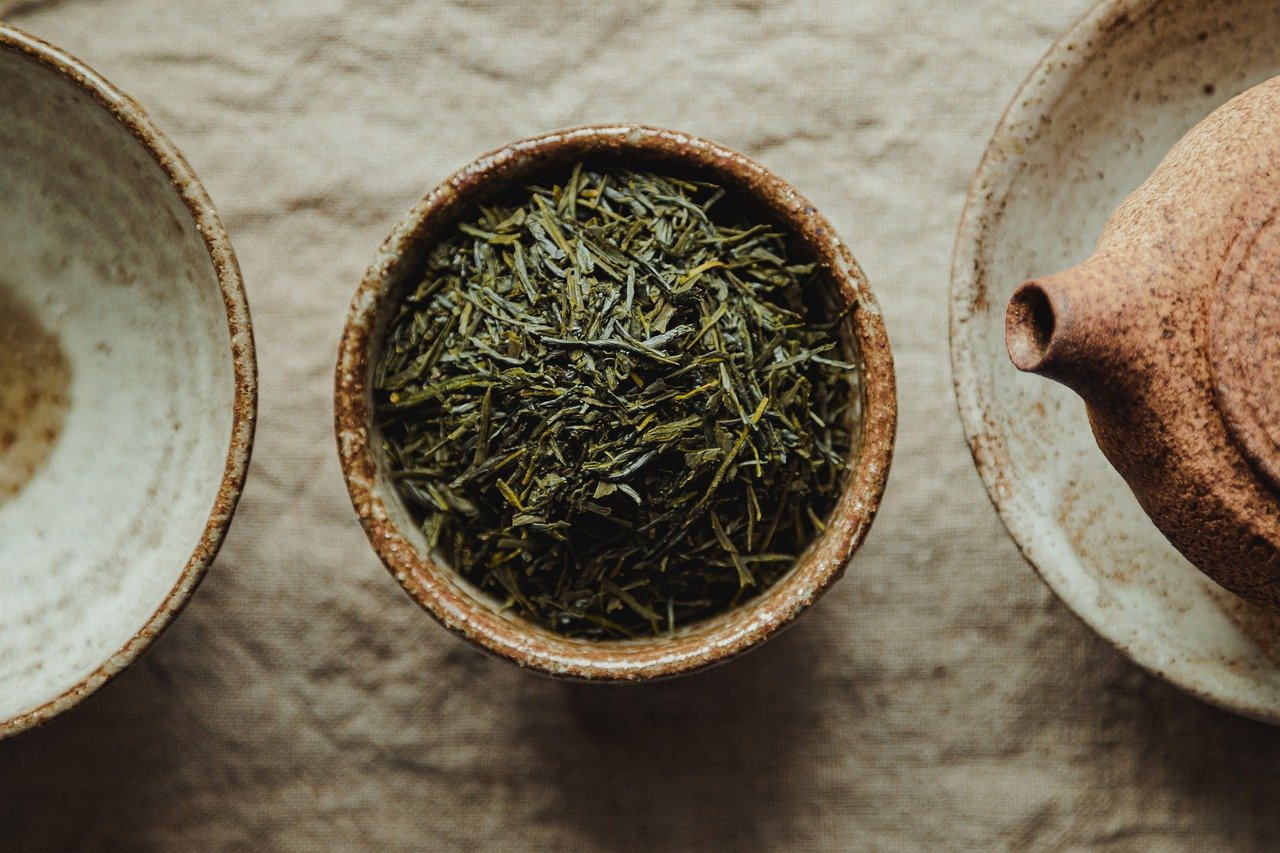
Applying Glazes
Applying glazes to your pottery pieces is like adding the final brush strokes to a masterpiece; it can transform a simple clay form into a stunning work of art. Glazes not only enhance the aesthetic appeal of your pottery but also serve functional purposes, such as providing a waterproof surface. However, mastering the art of glazing requires some knowledge and practice. So, let’s dive into the world of glazes and explore how you can apply them effectively!
First, it's essential to understand that glazes come in various types, each offering unique finishes and effects. You can choose from glossy, matte, transparent, or opaque glazes, depending on the look you want to achieve. When selecting a glaze, consider how it interacts with the clay body and the firing temperature. For example, some glazes are designed specifically for low-fire ceramics, while others are suitable for high-fire projects. This compatibility is crucial for achieving the desired outcome.
Before you start glazing, make sure your pottery piece is thoroughly dried and fired from its initial shaping. Applying glaze on greenware (unfired pottery) is typically a no-go, as it can cause issues during firing. Once your piece is ready, you can prepare your workspace. Lay down some newspaper or a plastic sheet to catch any drips and spills. Keeping your area clean not only helps in maintaining focus but also ensures that you don’t accidentally glaze areas that you want to remain unglazed.
Now, let's talk about the actual application process. There are several methods you can use to apply glaze:
- Dipping: This method involves immersing your pottery piece into a container filled with glaze. It’s a quick way to cover the entire surface, but be cautious of the thickness; too much glaze can lead to drips and runs.
- Brushing: Using a brush allows for more control, especially if you want to apply different colors or designs. You can layer glazes to achieve depth and complexity, creating stunning visual effects.
- Spraying: For those looking for an even coat, spraying glaze can be an excellent option. This method requires some equipment and practice but can yield professional results.
Regardless of the method you choose, always remember to apply the glaze evenly. Uneven application can lead to unsightly spots or streaks after firing. If you're unsure about your technique, practice on test tiles before glazing your final piece. This way, you can experiment with different colors and application methods without the worry of ruining your work.
Once you’ve applied the glaze, allow it to dry completely before firing. This drying period is crucial, as it prevents the glaze from bubbling or running during the firing process. After the glaze has dried, you can proceed with the firing in your kiln. Always follow the manufacturer's instructions for the specific glaze you are using, as firing temperatures can vary significantly.
Finally, don't forget to clean your tools and workspace after glazing. This not only helps maintain your equipment but also ensures that you’re ready for your next pottery project. Glazing can be messy, but with a little preparation and practice, you’ll soon find yourself creating beautiful, unique pieces that reflect your personal style.
Q: Can I apply glaze to my pottery before the first firing?
A: No, it's best to apply glaze only after the initial firing of your pottery. This ensures that the glaze adheres properly and performs as intended.
Q: What should I do if my glaze runs during firing?
A: If your glaze runs, it may be due to applying too thick a layer. In the future, try to apply a thinner coat and consider using a kiln shelf to catch any drips.
Q: How do I know which glaze to use for my clay body?
A: Always check the manufacturer's specifications for the clay and glaze. Some glazes are formulated for specific clay bodies, and using the wrong combination can lead to undesirable results.
Frequently Asked Questions
- What is the best type of pottery wheel for beginners?
For beginners, a kick wheel or an electric wheel can be ideal. Electric wheels are easier to use since they require less physical effort, while kick wheels can offer a more traditional experience. Choose based on your comfort and the space you have available!
- How do I choose the right type of clay?
When starting out, it's best to use earthenware or stoneware clay. These types are forgiving and easy to work with. Consider your project goals—if you want pieces that can withstand heat, stoneware is your go-to. If you’re after vibrant colors, earthenware is fantastic!
- What are common mistakes beginners make on the pottery wheel?
Many beginners struggle with centering the clay properly. If the clay isn’t centered, it can lead to uneven pieces. Another mistake is applying inconsistent pressure while shaping, which can result in wobbly forms. Practice makes perfect!
- How can I avoid improper centering of the clay?
To center your clay, start with a well-prepared ball of clay and use your hands to apply even pressure while the wheel spins. Remember, it’s all about feeling the clay and adjusting your grip as needed. Don’t rush; take your time!
- What finishing techniques should I learn?
Once you've shaped your pottery, learn to trim your pieces for balance and aesthetics. Additionally, mastering glazing techniques will enhance the final look of your work. Experiment with different methods to find what suits your style!
- Can I use air-dry clay instead of fired clay?
Yes, you can! Air-dry clay is a great option for beginners who want to skip the kiln process. However, keep in mind that air-dry clay isn’t as durable as fired clay, so it’s best for decorative pieces rather than functional pottery.
- What tools do I need to start pottery?
Essential tools include a pottery wheel, wire cutter, ribs, and sponges. These will help you shape, smooth, and finish your pieces effectively. Invest in quality tools as they can make a significant difference in your pottery experience!
- How long does it take to get good at using a pottery wheel?
Like any skill, mastering the pottery wheel takes time and practice. Many find they can create decent pieces after a few sessions, but true mastery can take months or even years. Enjoy the journey, and don’t rush the process!



















